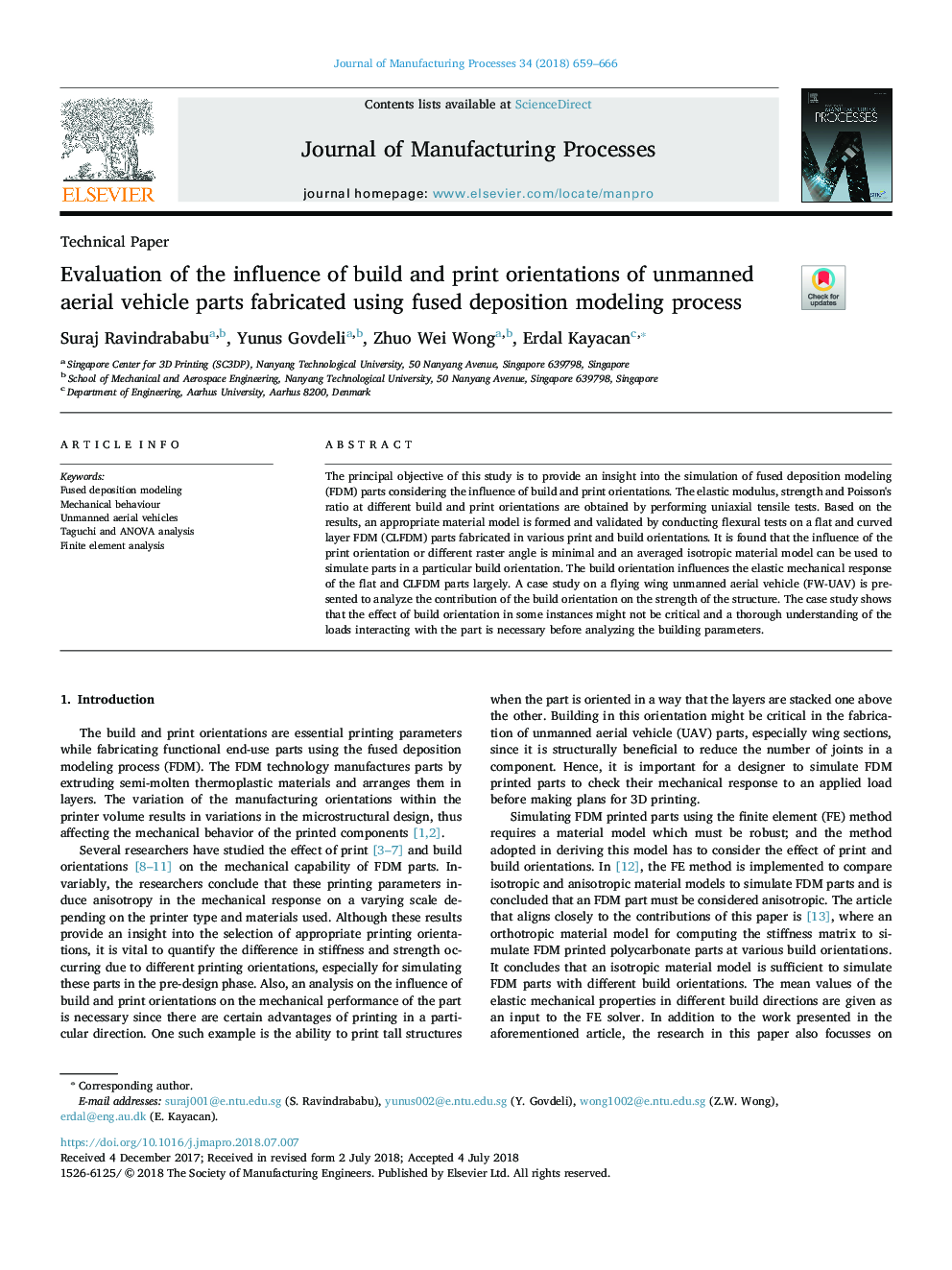| Article ID | Journal | Published Year | Pages | File Type |
|---|---|---|---|---|
| 8047951 | Journal of Manufacturing Processes | 2018 | 8 Pages |
Abstract
The principal objective of this study is to provide an insight into the simulation of fused deposition modeling (FDM) parts considering the influence of build and print orientations. The elastic modulus, strength and Poisson's ratio at different build and print orientations are obtained by performing uniaxial tensile tests. Based on the results, an appropriate material model is formed and validated by conducting flexural tests on a flat and curved layer FDM (CLFDM) parts fabricated in various print and build orientations. It is found that the influence of the print orientation or different raster angle is minimal and an averaged isotropic material model can be used to simulate parts in a particular build orientation. The build orientation influences the elastic mechanical response of the flat and CLFDM parts largely. A case study on a flying wing unmanned aerial vehicle (FW-UAV) is presented to analyze the contribution of the build orientation on the strength of the structure. The case study shows that the effect of build orientation in some instances might not be critical and a thorough understanding of the loads interacting with the part is necessary before analyzing the building parameters.
Keywords
Related Topics
Physical Sciences and Engineering
Engineering
Industrial and Manufacturing Engineering
Authors
Suraj Ravindrababu, Yunus Govdeli, Zhuo Wei Wong, Erdal Kayacan,
